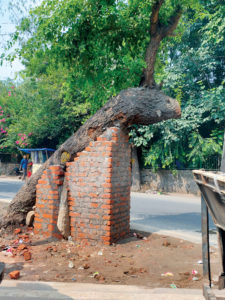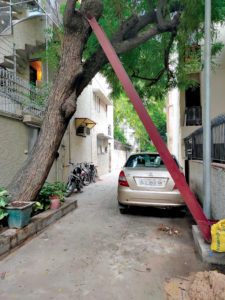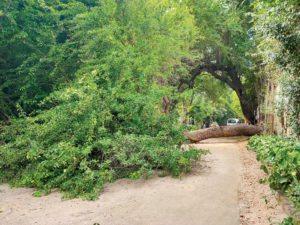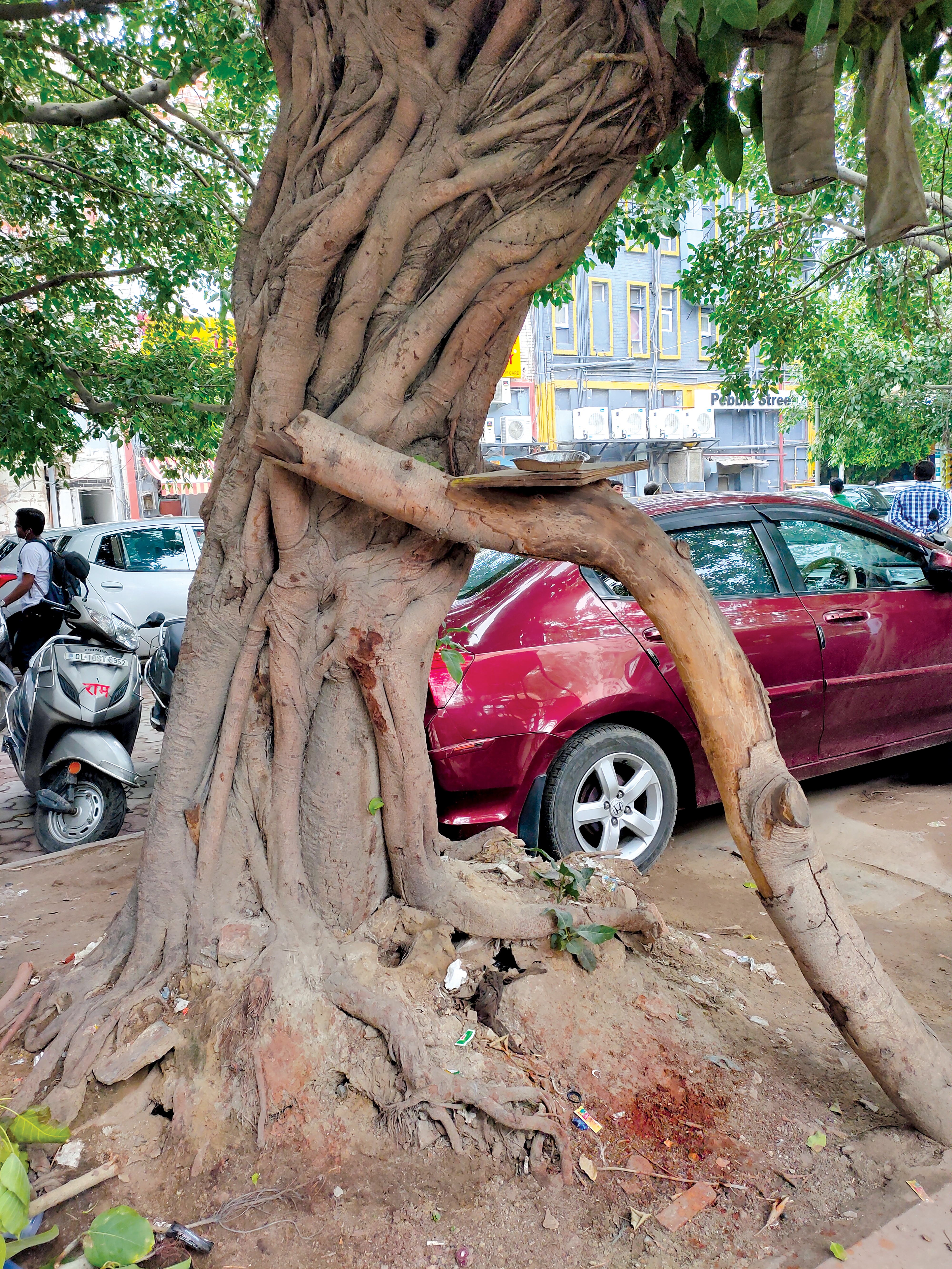Trees in New Friends Colony and Sarojini Nagar have survived only because of the activism of concerned citizens
As the whole world talks about Greta Thunberg for shedding light on the risks posed by climate change, we take a closer look at two colonies in south Delhi, where two individuals with the help of various city authorities gave life back to 10 age-old trees. No mean feat in a city where everybody seems too busy to care about foliage.
During a storm in May 2017, a peepul (sacred fig) tree fell on the road of New Friends Colony in south Delhi. Due to the concretization of its base, the tree had become so weak that it could not withstand gusts of wind and was uprooted.
Traffic on the road was stalled. There was a hue and cry among residents. Until Verhaen Khanna, environment activist and founder of New Delhi Nature Society, who lives in Block C of the colony came to the rescue — of the tree as well as the residents.
His passion for the environment and especially for trees in the area is not always seen in a positive light. Khanna says that residents in the colony once even held a meeting to discuss his environmental activism.

After the peepul tree toppled over, Khanna was determined not to let it get chopped to pieces, which he strongly feels is the usual solution for the authorities. In order to save this tree, and give life back to it, Khanna along with the then President of Resident Welfare Association — Kanika Pandit —called the Municipal Corporation of Delhi (MCD) for help.
“We got MCD to start digging up all the cement around the base of the tree. It took them 2-3 days to get rid of all the concrete,” recalls Khanna. A huge pit was created around the base, without disturbing the roots of the tree, but another call was the need of the hour, because of underground cables which would be disturbed.
The tree had to be lifted without damaging the roots, some roots were still connected in the ground, to create a healthy pit. A crane was called in the colony to lift the tree. Following this, a call was made to BSES, the electricity provider, to safeguard the wires. As soon as the wires were safeguarded, the MCD team brought manure and filled up the pit while the crane held the tree straight.
The tree needed support because the roots were still very weak, and did not have the strength to stand on its own. To solve this problem, Khanna and Pandit decided to get a support wall built next to the tree.
Because trees tend to choke when in constricted with cement, the support wall was built in a radius of one metre from the tree and extra soil was placed around the tree, within the wall. This proved to be a life-saving measure. The cost of the support wall was borne by the MCD after much persuasion.
Once the process was completed, the tree barely had leaves, because the canopy of the tree had to be cut. However, today, the tree stands straight, with new lush leaves grown on its top, and new branches coming into formation.

The guard of a home adjacent to the tree says that he watered the tree every day. “I kept the water running for at least an hour. The soil below is always soaked, that’s why you can see these leaves today. I try to maintain it as much as I can. We also planted some small tulsi plants but the neighbours did not like the idea much and they got some removed,” he said.
Is it easy to get the municipal authorities to help? “We had to make a lot of calls. Being the president of the RWA, I used to talk with these authorities on a regular basis. So it wasn’t a big problem to ask for their help to save these trees,” said Pandit.
She also said that out of all the authorities she and Khanna speak to, MCD is the most difficult to work with. “They always say that they lack funds.”
However, she would not like to pin all the blame “People have to be more aware to care for the environment, it has to come from the government side and the public too,” said Pandit.
In this fashion, Khanna and Pandit together saved 10 trees in total, in New Friends Colony and Maharani Bagh area. Out of these 10 trees, none fell again.
In Maharani Bagh too, shahtoot (wild mulberry) trees fell and were later supported by either structures made of bricks or an iron pole.

On the visit to Maharani Bagh, this reporter saw a tree lying on the road, covering almost the entire width, leading to complete blockage. This tree, Khanna says, is “yet to be saved.” The process he described will be followed again.
Obviously, trees fall over because the roots of these trees are not strong, and one of the reasons is concrete around the base. As per the order of National Green Tribunal (NGT), no one, not even the authorities, cannot concretise an area within a one-metre radius of a tree.
Had Khanna and Pandit not worked together, he says, “these trees would’ve been chopped into pieces.” Which is no solution, “in Delhi, transplanting has 99% failure rate.” Giving an example of ITPO (India Trade Promotion Organisation), Khanna says that out of the 1,713 trees to be transplanted, only 36 were healthy enough to survive the process.
Delhi’s citizens are becoming aware about the plight of the Capital’s trees. In June last year, Delhi saw its own ‘Chipko’ movement, where more than 1,500 people participated to save 16,500 trees in seven colonies in south Delhi.
Recently, the Delhi government announced “Delhi tree challenge” programme. Under this programme, a home delivery service will be introduced, through which citizen of the Capital will get a tree or a plant to nurture and grow.
As per the announcement, all it would take is a WhatsApp message to be sent at the number to be specified. This plan is not just to tackle the winter pollution, for which Delhi has become infamous, but it will continue even after the cold season is over.





